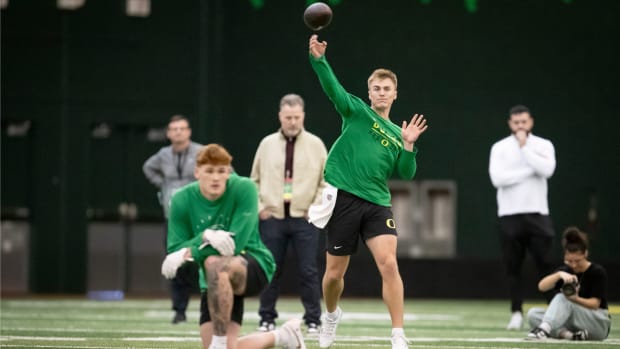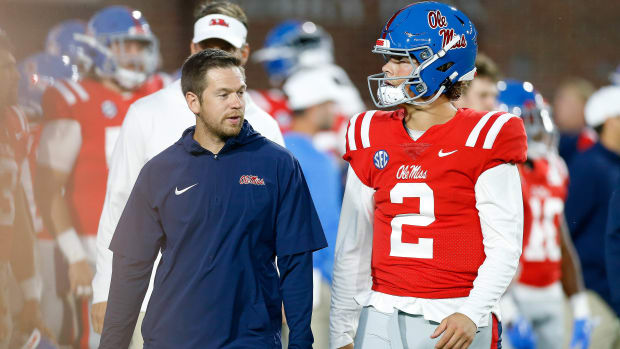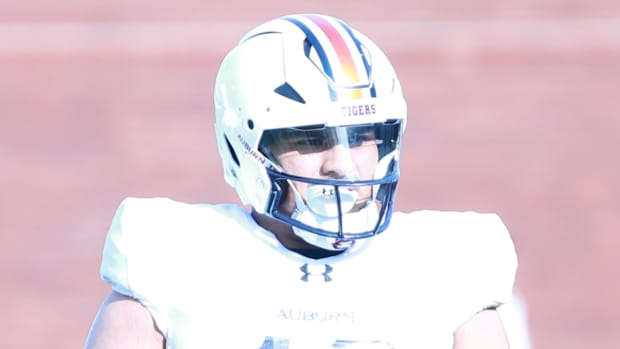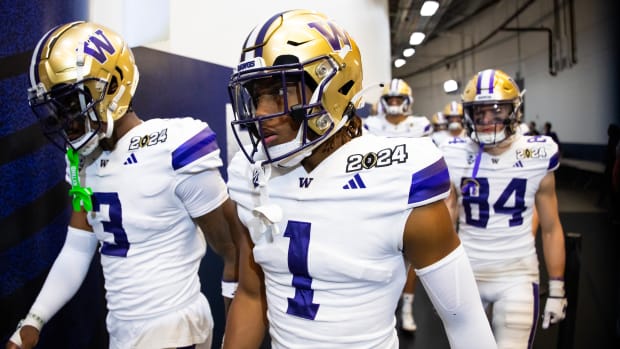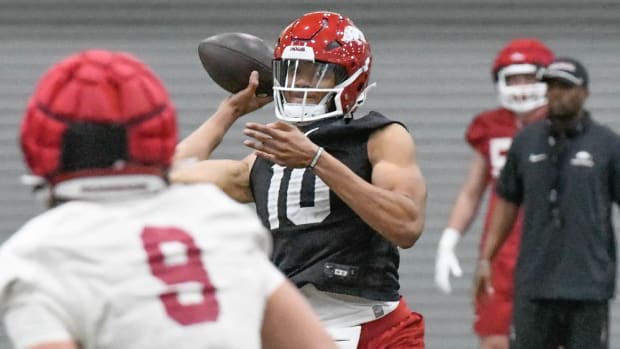What Are Realistic Short-Term Expectations for Notre Dame and Nebraska?
From Tony: Do recruiting results cause you to change who your Top 25 for next season would be? Or, at least, your Top 25 going into spring practice (since we all can tell oh-so-much based on intra-team scrimmages)?
This might not be the best question for me, because I don’t rank college football teams very often anymore. I rank things such as TV Shows That Need To Be Rebooted, Songs From Disney Movies and Amount of Actual Irony In The Events Depicted In Alanis Morrissette’s Ironic.
But I still rank college football teams every once in a while, and I can say with great certainty that the results of the most recent signing day aren’t likely to change much in a preseason Top 25. This isn’t basketball. When Marvin Bagley III reclassified and joined Duke’s hoops recruiting class this past offseason, it probably was worth re-evaluating the Blue Devils’ place in the preseason rankings. One freshman can have that big of an impact, and it’s also easier to predict which freshmen will succeed immediately in basketball.
That simply isn’t the case in football. Trevor Lawrence might be the top-ranked quarterback recruit in the nation, but there is no guarantee that he plays any meaningful snaps at Clemson during the 2018 season. He’d have to beat out incumbent starter Kelly Bryant and sophomore Hunter Johnson. Florida State signed a crop of highly rated receivers—and given the Seminoles’ roster numbers, some probably have to contribute as freshmen—but it’s difficult to tell how each will fit into an offense that Willie Taggart has yet to run with Florida State players.
Do not take this to mean I’m the old guy yelling at clouds with regard to recruiting rankings. They are quite useful, but they’re far more useful when combined into three- and four-year rolling averages than when taken class-by-class. A few years ago, SB Nation’s Bud Elliott created the Blue Chip Ratio, which is a helpful way to determine which teams are capable of competing for the national title. The one thing that might cause me to adjust a preseason top 25 is a recruiting trendline that significantly raises or lowers a program’s blue-chip ratio. For example, given what we’ve seen the past two recruiting cycles, are we so sure Georgia is going to take a step back even after losing its best backs and its best pass rushers? Perhaps the Bulldogs remain near the top of the rankings. Meanwhile, does Michigan’s falling blue-chip ratio mean we should revise the Wolverines’ preseason rank down? (That second question is more complicated because Michigan’s fortunes also may be affected by whatever the NCAA rules on Ole Miss transfer Shea Patterson’s availability for this season.)
Besides, preseason rankings are for entertainment only. This is why I’d prefer to rank Songs That Have The Same Name But Aren’t Covers.
From @SOUPERMANTDOT: Is Brian Kelly building a consistent minimum 10-win team at Notre Dame?
Let me stop you right there. If you’re a Notre Dame fan and you’re requiring at least 10 wins a season to be pleased with your football program, you are setting yourself up for disappointment.
While the 4–8 record Notre Dame posted in 2016 is unacceptable under any circumstances, the difficulty of the job relative to the Alabamas, Ohio States and Clemsons should provide a slight grading curve. I realize this is an ironic choice of words because Notre Dame’s classroom grading policies, stricter honor code and lack of an Underwater Basketweaving major* are some of the reasons why it’s tougher to win there than it is at the schools mentioned above. Another major reason is a lack of a local recruiting base. No program has a stronger national reach than Notre Dame, but that still doesn’t make recruiting nationally easy. It’s still much easier to have hundreds of quality prospects within driving distance.
*I’m not sure how we managed to settle on “Underwater Basketweaving” as code for an easy major. Weaving baskets while underwater sounds quite difficult.
A reasonable expectation for Notre Dame is a season approaching double-digit wins in most years with the occasional run at playoff contention. That means a four-year mark that looks something like this: 9–4, 10–3, 8–5, 11–2. Ten wins every season is unreasonable at most places. Alabama and Ohio State might be the only places that can reasonably expect it no matter the coach. Georgia and Clemson may be on the way to joining that group. Florida State, Penn State and USC could play their way back onto that list. But it will always be a short list. And given the way college football has changed over the past 30 years, Notre Dame doesn’t belong on it.
One of the keys to happiness in college football is understanding the realistic expectations for your favorite program. For Notre Dame, a minimum of 10 wins a season is an unfair standard.
From @Palmerism: #DearAndy Which upcoming goal is most important for Scott Frost at Nebraska: 1) Measurable improvement 2) Return to competitiveness 3) Bowl game appearance 4) Return to Top 25 team?
If Frost can achieve No. 1, he’ll definitely achieve Nos. 2 and 3 and probably will achieve No. 4. Unlike the question above, these aren’t unreasonable expectations.
Nebraska should be able to do what Wisconsin has done in recent years. That isn’t asking the impossible. It might not happen immediately, but given how quickly Frost turned the corner at UCF and given the quality of the Big Ten West relative to some other divisions in college football, it’s quite possible Nebraska can reach this level in two seasons. Given the buzz in the coaching community about Nebraska quarterback signee Adrian Martinez from Fresno, Calif., it’s possible Frost is already well on his way.
From Ryan: #DearAndy who is your top Group of Five team for the 2018 season?
Last year, the obvious favorite was South Florida, which returned most of the roster from an 11–2 team. Of course, none of us saw UCF and its 13–0 season coming. So we had the correct division (American Athletic Conference East) but the wrong team. This year, a Boise State team that won nine of its last 10 and whipped Oregon in the Las Vegas Bowl looks as if it might be the best in the Group of Five. Brett Rypien has firm control of the offense, and 10 starters return from a defense that ranked No. 15 in the nation in yards per play allowed last season.
That said, the Broncos could face a serious contender from within the Mountain West. Jeff Tedford did a fantastic job in his first year at Fresno State, and he returns 15 starters from a team that went 10–4 and beat Boise State in November before losing to the Broncos in the conference title game.
